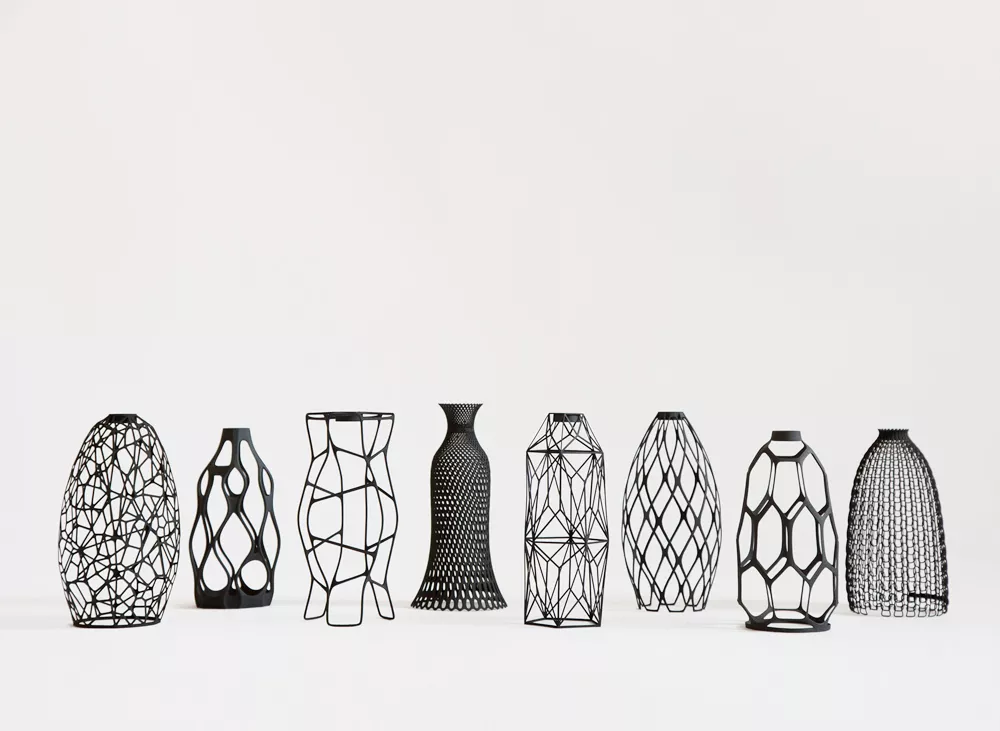A collection of design vases combining upcycling and 3D printing technology [Source: Cladio Morelli via Designlibero]![A collection of design vases combining upcycling and 3D printing technology [Source: Cladio Morelli via Designlibero ]](https://fabbaloo.com/wp-content/uploads/2020/05/Vases1_img_5eb067c98d6f1.png)
Charles Goulding and Peter Favata of R&D Tax Savers examine 3D printing put to use in creating vases.
A Brief History
Vases have been around for thousands of years, dating back to the Bronze Age where they were not decorative, but used for storing cooking oil and grains. These vases were created on a revolving pottery wheel, creating a circular shape with a wide mouth for easy storage and access to the contents inside.
![Lusatian ceramic vase from the late Bronze Age dated 900-700 BC [Source: Sands of Time Ancient Art ]](https://fabbaloo.com/wp-content/uploads/2020/05/Vases3_img_5eb067ca1e8da.png)
In ancient Greece, vases were created in a fashion that people have become more accustomed to today; decorative with beautiful designs, although still rudimentary in shape.
It wasn’t until the 1st century AD that people learned to make vases using a glass blowing technique, which was used to create the Portland Vase in Rome. These vases would have a solid color background (usually black or blue) with detailed designs on the body of the vase.
![The Portland Vase, Scene 1 [Source: Wikimedia ]](https://fabbaloo.com/wp-content/uploads/2020/05/Vases2_img_5eb067ca6f1ad.png)
The Portland Vase, Scene 1 [Source: Wikimedia]
The use of porcelain for vase crafting appeared between 206 BC and 220 AD. These are some of the most famous and popular vases ever produced. Many people are familiar with the Chinese porcelain vases that came out of the Ming Dynasty.
3D Printing Vases
Now there exists a new way to produce beautiful and functional vases using 3D printing, for which there are many advantages.
Designers can now successfully create durable vases with unique and complex designs that otherwise would be impossible to make using traditional materials and techniques. These designs can also be repeated endlessly and more efficiently when compared to other methods. Additionally, 3D printing provides an easy way to test the feasibility of a design and make improvements where necessary.
Companies utilizing 3D printing to create vases and other home furnishings may be eligible for R&D tax credits.
The Research & Development Tax Credit
Enacted in 1981, the now permanent Federal Research and Development (R&D) Tax Credit allows a credit that typically ranges from 4%-7% of eligible spending for new and improved products and processes. Qualified research must meet the following four criteria:
-
Must be technological in nature
-
Must be a component of the taxpayer’s business
-
Must represent R&D in the experimental sense and generally includes all such costs related to the development or improvement of a product or process
-
Must eliminate uncertainty through a process of experimentation that considers one or more alternatives
Eligible costs include US employee wages, cost of supplies consumed in the R&D process, cost of pre-production testing, US contract research expenses, and certain costs associated with developing a patent.
On December 18, 2015, President Obama signed the PATH Act, making the R&D Tax Credit permanent. Since 2016, the R&D credit can be used to offset Alternative Minimum Tax (AMT) or companies with revenue below $50MM and, startup businesses can obtain up to $250,000 per year in cash rebates that can be applied directly to payroll taxes.
Conclusion
Vases have been around for thousands of years, but have changed drastically with the discovery of new materials and design techniques. Now, vases can be designed and 3D printed to meet various aesthetic and functional needs.

